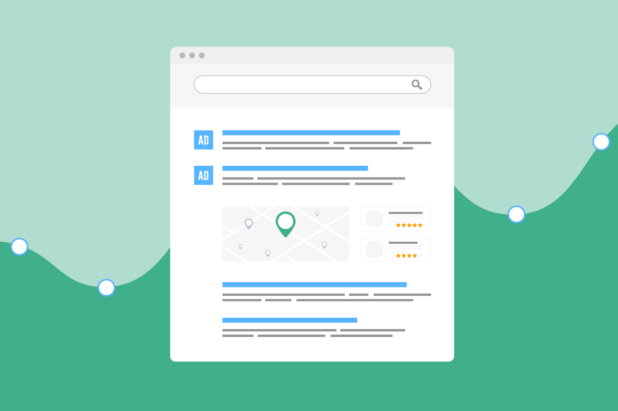The inner workings of the Google search algorithm have long been considered one of the great mysteries in digital marketing.
Specific ranking factors, and how they are weighted, can be difficult to nail down due to the complexity, dynamism and sheer volume of attributes evaluated by search engines. Not to mention, Google and other companies tend to keep proprietary details close to the vest.
However, based on information that has been shared publicly, as well as some eye-opening document leaks, search marketers have been able to piece together a fairly complete and up-to-date picture of SEO ranking factors.
At TopRank Marketing, we make it our business to maintain a clear understanding of what matters most when it comes to ranking in SEO, and which aspects should be prioritized by brands aiming to win for competitive terms. Now, we’re making it your business as well.
SEO ranking factors according to Google
In their official resource center, Google has a page explaining how results are automatically generated, dividing the process of fetching results into five facets:
- Meaning: Google establishes the intent behind your query by leveraging language models that match your search terms to useful content.
- Relevance: Content is analyzed to assess whether it contains information that might be relevant to what the user is looking for.
- Quality: The engine prioritizes pages that seem most helpful, by identifying signals that help determine which content demonstrates expertise, authoritativeness and trustworthiness.
- Usability: As a secondary threshold, content that people will find more accessible – e.g. mobile responsiveness and fast page loads – can see a boost.
- Context: Results are personalized for relevance based on information such as user location, past search history, and search settings.

The screenshot above, via Google, illustrates how the search engine’s model recognizes and contextualizes intent behind various queries. Per the company, “This system took over five years to develop and significantly improves results in over 30% of searches across languages.”
Another important note from Google: “If you search for trending keywords, our systems understand that up-to-date information might be more useful than older pages. This means that when you’re searching for sports scores, company earnings or anything related that’s especially new, you’ll see the latest information.” We’ve seen this play out time and time again with client programs: pages that focus on fast-changing topics can lose rankings in a hurry when not updated regularly.
A deeper third-party look at SEO ranking factors
The above guidelines from Google are quite useful in creating content that’s built to rank. Understanding the search intent behind a keyword, and creating something of relevance and high quality to meet it, will be the primary path to gaining organic visibility. That’s no secret, although it’s easier said than done.
Within this guiding directive, there are plenty of smaller steps you can take to ensure content is optimized for search. Brian Dean of Backlinko compiled an exhaustive list of more than 200 ranking signals on Google, ranging from proven fixtures to “SEO nerd speculation.”
There are too many inclusions to cover here, and we recommend reviewing the full rundown, but here are the different categories of SEO ranking factors, and what they entail.
Domain factors
This includes things like the age, history and perceived legitimacy of your domain.
Page-level factors
These concern the composition, structure and performance of the web page itself. Here you’ll want to account for everything from using keywords in titles and headers to technical factors like page load speed.
Site-level factors
Google analyzes the broader website that a page belongs to when evaluating the content itself. A page can benefit or be penalized by the quality of the site’s reputation, architecture and usability. It can also receive a boost from strong E-E-A-T signals.
Backlink factors
An important part of your link-building strategy, backlinks are links from one website to another that can serve as endorsements for search visibility. Search algorithms consider not only the number of backlinks a page receives, but also the quality and diversity of those backlinks, and the authority of the sources.
User interaction
While robotic algorithms do plenty of behind-the-scenes work to organize search results, humans play a big role in influencing how the results are arranged, because Google leans strongly on user-driven signals such as organic click-through rate, dwell time, direct visits and beyond.
Special Google algorithm rules
Over the years, Google has rolled out a number of algorithm changes, often with specific purposes and implications. This includes, for example, highlighting featured snippets and applying higher quality standards to “YMYL” (Your Money Your Life) keywords.
Brand signals
Don’t underestimate the extent to which your brand’s online footprint can come into play as an SEO ranking factor. Having active company accounts on social media platforms like Facebook, X/Twitter and LinkedIn is believed to boost SEO visibility. Additionally, having your brand’s name searched frequently in combination with the keywords you want to own can be hugely advantageous.
On-site Webspam factors
Webspam, also known as “spamdexing,” refers to content that is designed to manipulate search rankings in ways that don’t serve the user. Google will punish pages and sites that it views as having low-quality content (e.g. AI-generated content farms), keyword-stuffing, hidden affiliate links, meta tag spamming and more.
Off-site Webspam factors
There are some external spam-focused factors you should also avoid being associated with. This often relates to inbound link patterns that Google views as shady (unnatural influx, low-quality sources, selling backlinks, etc.).
Most important SEO ranking factors
Backlinko views these eight individual factors as the top ones to prioritize when creating or refreshing content, and they mostly line up with our agency’s experience. But remember, before you get to optimizing around these factors, it’s important to be sure you’re focusing on the right keywords to begin with.
- Quality Content
- Backlinks
- Technical SEO
- Keyword Optimization
- User Experience (UX)
- Schema Markup
- Social Signals
- Brand Signals
What to know about the Google ranking factors leak
It was big news within the SEO community when, in May of 2024, a massive internal Google document leak on GitHub provided unprecedented transparency into how Google’s ranking algorithm potentially operates. Many of the leaked insights served to reinforce the importance of search intent, uniqueness, and freshness of content, but there were also some surprises.
Among the big-picture takeaways from SEO legend Rand Fishkin, CEO of SparkToro, was that brand signals – despite ranking eighth on the above list – matter a lot more than previously thought.
“If there was one universal piece of advice I had for marketers seeking to broadly improve their organic search rankings and traffic,” said Fishkin, “it would be: ‘Build a notable, popular, well-recognized brand in your space, outside of Google search.’”
- Read more on our blog: How Content Marketing Propels B2B Brand Growth Today
How does AI affect search rankings?
It’s impossible to fully cover any search-related topic without discussing the role of AI. As you’re likely aware, Google has rolled out a generative search tool which provides AI-powered snapshots at the top of many results pages. This will have an effect on the searcher’s experience and the overall clicks to organic results.
In terms of ranking factors, the most important thing to know: Google is continually growing more sophisticated in detecting and penalizing AI-generated content, as well as spammy tactics supported by the technology.
While AI can be extremely powerful and beneficial for enhancing your marketing, brands should be very careful to avoid using it in ways that don’t ultimately lead to serving their audience unique, helpful, human content.
Push your top content to the top of the search rankings
Developing content that ranks near the top of a search engine results page (SERP) is challenging, but crucial to driving organic traffic for key terms. Research has found that pages appearing in the #1 position generate double the click-through rate of position #2, and nearly 4x the CTR for position #3. Results at the bottom of page one (#10) drive just a 1.6% CTR on average compared to 39.8% for the top spot.
Aiming for that top rank requires a strategic approach, a commitment to developing strong authority in your domain, and a clear understanding of SEO ranking factors.
Ready to win in the SERP? Learn more about building a powerful SEO strategy, or explore TopRank Marketing’s industry-leading SEO services.



